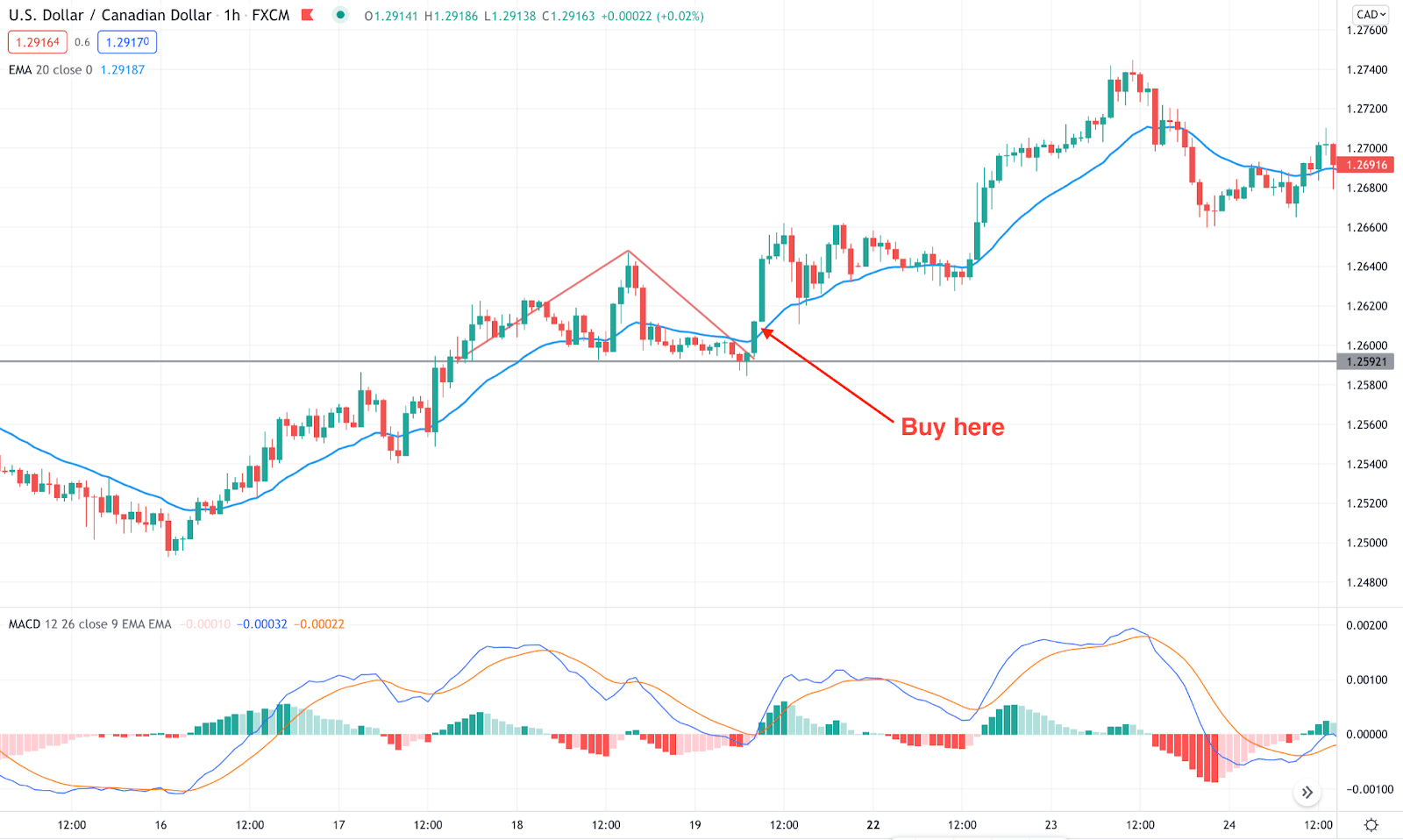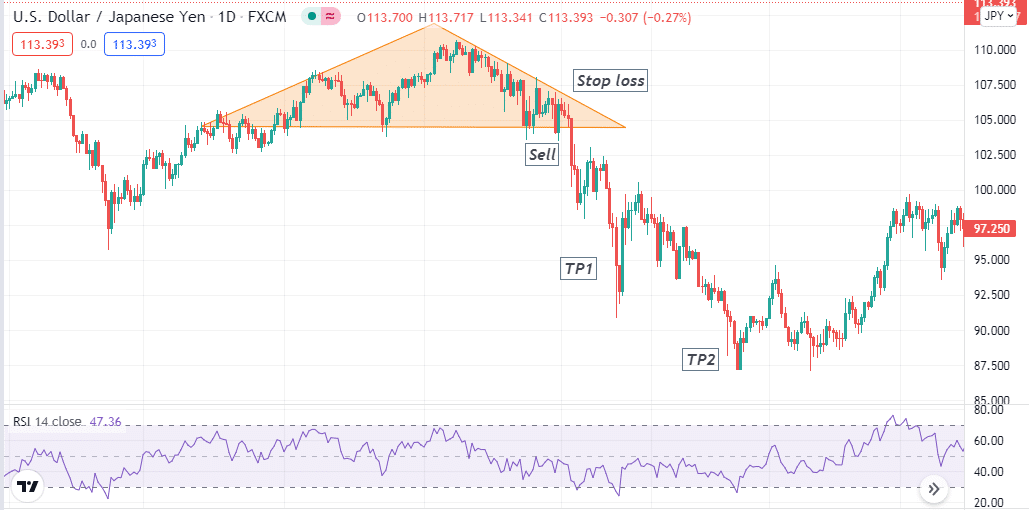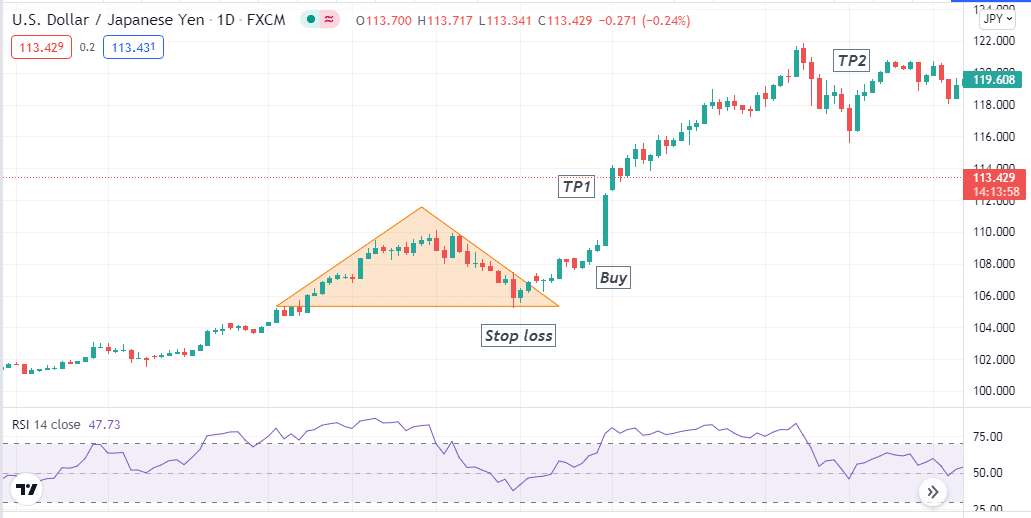The Roof pattern is a potential market reversal pattern, appears at the top and bottom of a swing and provides a reliable price reversal possibility. This pattern has a higher accuracy rate as it does not seem very frequently. Like other patterns, it can explain what is happening in the market and what a trader should do.
Pattern trading is very profitable if traders understand the story beneath the price structure. Moreover, it needs a good knowledge of the market structure and other technical tools.
If you are intended to include the Roof pattern in your trading strategy, the following section is for you. We will discuss everything a trader should know about the roof pattern, including an exact buying and selling method.
What is the Roof pattern strategy?
It is a simple buying and selling method that considers the Roof pattern the primary trading tool.
The Roof pattern comes from several candlesticks where both bulls are bears are present to show the extension of the existing market trend. This pattern was introduced by Thomas Bulkowski in 2005 and became profitable in any financial trading instrument.
Before moving further, let’s see how the Roof pattern looks like.

The above image shows the original version of the Roof pattern that came after a bullish trend. Bulls continued the market pressure within the pattern, made a new swing high, and created a top. Later on, bears regained the market pressure and recovered the primary loss. However, all activity happened above the horizontal support level, marked as point B. Once the price breaks below the horizontal area, it completes the sell position pattern.
How to identify the price direction using the Roof pattern?
After knowing how the pattern works, it is time to implement it in the trading condition. Once the price reaches the horizontal level, there are two possibilities. Whether the price will form a bullish rejection candlestick and move up or break below the level and extend the loss, in both cases, there is a trading opportunity for us.
As per the above image, if the price moves below point B with an impulsive bearish pressure, it will likely extend the selling pressure towards point C. On the other hand, the failure will open opportunities for bulls with the aim of testing point A. In the pattern, the higher success rate is towards sellers’ position. Therefore, a bearish breakout from point B has a higher profitability ratio than a bullish rejection.
A short-term strategy
This section will see the practical trading example with the real chart. As the primary section says, the Rooftop pattern combines candlesticks, which is just a part of a trading method. Therefore, using other indicators or price action tools will complete this strategy. We will look at the broader market trend in the short-term strategy and use the Rooftop pattern with 20 EMA and Traders Dynamic Index Indicator.
Bullish trade setup
You can open a buy trade once these conditions are present in the price:
- The H4 or daily market trend is bullish, and the intraday price is above any significant support level.
- The Roof pattern showed a bullish rejection candlestick from the horizontal support level.
- The stop loss is below the horizontal level and Take profit is based on the near-term resistances.

Bearish trade setup
You can open a sell trade once these conditions are present in the price:
- The price is below any key resistance level and aiming lower.
- The Rooftop pattern appears after a corrective bullish trend, and the price moves below the horizontal level.
- The SL is above the horizontal level with some buffer, and TP is based on R: R.

A long-term strategy
This method is perfect for a position or swing trading system where the primary aim is to catch the cyclical movement. It applies to time frames from H4 to weekly, but it is better to trade in the daily chart to avoid intraday market noise.
Bullish trade setup
You can open a buy trade once these conditions are present in the price:
- The price is above any key level and aiming higher.
- The Rooftop pattern appears after a bullish trend and shows a bullish rejection from the horizontal level.
- The SL is below the support with some buffer, and TP is based on R:R.

Bearish trade setup
You can open a sell trade once these conditions are present in the price:
- The price is below any key resistance level and aiming lower.
- The Rooftop pattern appears after a corrective bullish trend, and the price moves below the horizontal level.
- The SL is above the horizontal level with some buffer, and TP is based on R:R.

Pros and cons
Let’s see the pros and cons of the Roof pattern strategy to understand the trading method better.
| Pros | Cons |
| The pattern’s method is capable of providing both bullish and bearish signals. | The pattern does not frequently appear in the trading chart. |
| This pattern can collaborate with other technical tools to provide a reliable signal. | The accuracy of this pattern is low in the intraday chart. |
| The risk and reward ratio of this trading method is affordable. | This trading method needs close attention to the risk management system. |
Final thoughts
Roof pattern strategy is a profitable way to make money from forex trading, but it needs close attention to the unavoidable market uncertainty. A global FX market is where institutional buyers and sellers strongly influence retail traders. Therefore, traders should remain cautious about the risk by applying a sound trade management system.




